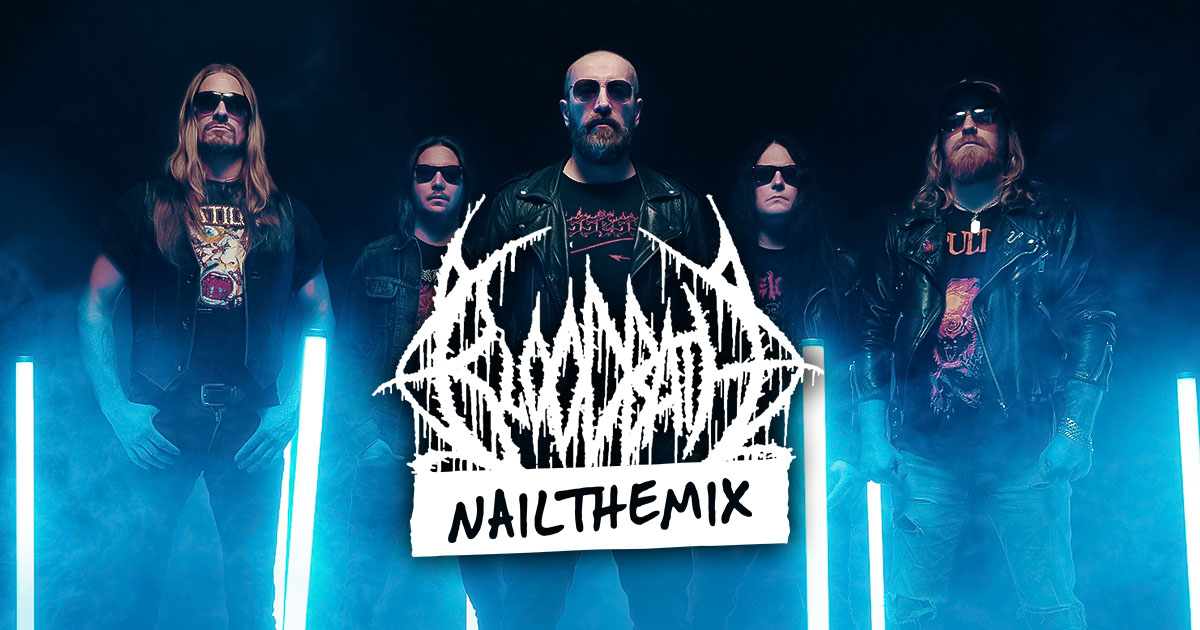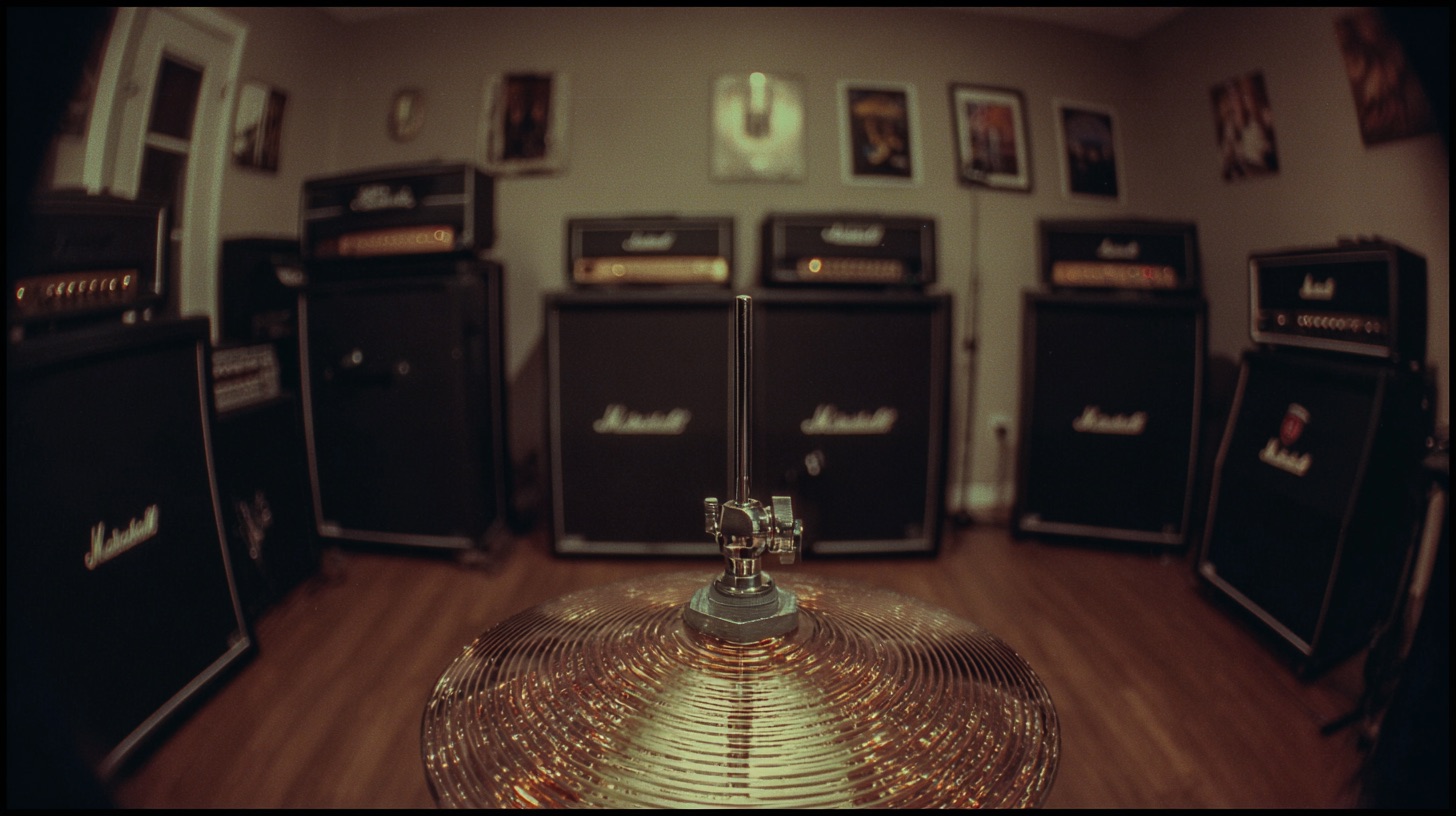
# Mixing Blessthefall’s ‘Cutthroat’: Modern Tricks for Huge Drums & Bass
Nail The Mix Staff
Let’s be real, a track like Blessthefall’s “Cutthroat” is a masterclass in modern metalcore production. It’s got a massive, anthemic chorus, intricate layers, and a rhythm section that hits like a freight train. When you get the chance to peel back the layers and look at the raw multi-tracks, you uncover the specific production tricks that make it all work.
We did just that, diving into the session that producer Tyler Smyth mixed for Nail The Mix. Forget the final polished product for a second; the gold is in the raw ingredients. From making programmed drums sound colossal to building an unshakable low-end foundation, these are the techniques you can steal for your own mixes.
Making Programmed Drums Slam (When Real Drums Aren’t an Option)
First thing’s first: the drums in this session are programmed. And before anyone gets elitist about it, let’s face it—if you want to mix modern metal, you have to know how to make programmed drums sound incredible. It’s a non-negotiable skill. Whether due to budget, a drummer’s injury, or a stylistic choice, you’ll see them constantly. The key isn’t to fight it, but to know how to work with them.
The Secret Lies in the Rooms
The biggest giveaway of fake-sounding drums is a sterile, dry, “typewriter” sound. The “Cutthroat” session masterfully avoids this by providing dedicated room tracks for the main kit pieces: a Kick Room, a Snare Room, and a Tom Room.
These aren’t just for reverb; they are the key to creating a sense of space and realism. Blending these room mics in with the direct samples gives the kit depth and helps it feel like it was recorded in an actual space. How you process these room tracks—compressing them to bring up the decay, for instance—is where you can really shape the size of the overall kit.
Creating Gaps for Colossal Snares
One of the coolest tricks in this session is the “Snare Accent” track. In sections with big, open rhythmic gaps—like the bridge before the final chorus—the guitars and bass drop out, leaving space for a massive snare hit. Instead of just relying on the main snare sample, a separate accent sample is triggered.
This accent is essentially a super-powered room sample designed to be long, huge, and space-filling. You could use room samples, dedicated accent samples, or even unconventional sounds like processed explosions to achieve this. The goal is the same: when the rhythm section creates a vacuum, fill it with an enormous snare sound that adds drama and impact.
Building a Rock-Solid Low End with Layered Bass
Next up, the bass. The session splits the bass into two tracks: “Bass DI” and “Bass Sub.” The sub track sounds suspiciously perfect and consistent—because it’s likely programmed. This is a killer technique for modern metal.
The Programmed Sub-Bass Trick
One of the biggest mix-killers is an out-of-tune low end. Due to heavy pick attack and the physics of thick strings, a performed bass can have subtle but damaging pitch fluctuations. This creates a weak, sour-sounding foundation that undermines the entire mix.
The solution used here is simple but brilliant: create a separate, programmed sub-bass track that perfectly follows the bassline and is flawlessly in tune.
How To Apply This Technique
- Isolate the Sub: Use the programmed track as your solid, in-tune foundation. You can low-pass it so it only contains the fundamental low frequencies (e.g., everything below 80-100Hz).
- Carve Out the DI: On your performed DI bass track, use a high-pass filter to cut out the sub frequencies. This is crucial for avoiding phase issues and clashing low-end information. Check out these tips on how to mix low-end for more on this.
- Blend for Character: Now, blend the two. The DI provides all the essential mid-range character, pick attack, and grit, while the programmed sub delivers the consistent weight and perfect pitch. You get the best of both worlds: human performance and machine-like stability, a common multi-track DI strategy.
Taming the Guitar & Synth Layers
“Cutthroat” is packed with layers. Beyond the core rhythm guitars, you have multiple clean tracks, inverse cleans, leads, and a healthy dose of synths, choirs, and drones. The challenge is making them all work together without turning into a chaotic mess.
This is where automation becomes your best friend. With so many atmospheric elements like the “Evolving Choir” and “Creepy Drone,” you can’t just set and forget the faders. These elements need to be automated to swell up in key moments and tuck back down to create dynamics and prevent the mix from getting cluttered. For example, that Evolving Choir that plays with the clean guitars in the bridge needs careful automation to feel epic without overwhelming everything.
Polishing Vocals for a Massive Modern Chorus
The chorus of “Cutthroat” is undeniably huge and hooky. To do it justice in the mix, the vocals need to be treated like the star of the show. This means getting them smooth, upfront, and impactful—almost like a pop mix.
When you listen to the raw vocals, you can hear natural volume fluctuations, especially when the singer jumps to higher notes. The mixer’s job is to smooth this out completely. This is achieved through meticulous volume automation and careful vocal compression. You’re not trying to just control peaks; you’re creating a consistently powerful vocal that can sit right on top of the dense instrumentation without ever getting lost.
Learn the Pros’ Techniques Firsthand
Reading about these production techniques is a great starting point. But what if you could take the driver’s seat? What if you could get these exact multi-tracks from Blessthefall and mix them yourself?
Blessthefall on Nail The Mix
Tyler Smyth mixes "Cutthroat"
Get the Session
At Nail The Mix, that’s exactly what we do. Every month, we give our members a new set of real multi-tracks from a massive band and they get to watch the original producer mix the song from scratch in a live, interactive class. You can see precisely how pros like Tyler Smith tackle programmed drums, layer bass, and automate vocals to get that polished, professional sound.
Stop guessing and start learning the methods that work. If you’re ready to move beyond presets and truly unlock your sound, come see how “Cutthroat” and dozens of other classic metal tracks were made. You can grab the multi-tracks and the full mixing session with Tyler Smith here and see for yourself.
Get a new set of multi-tracks every month from a world-class artist, a livestream with the producer who mixed it, 100+ tutorials, our exclusive plugins and more
Get Started for $1






